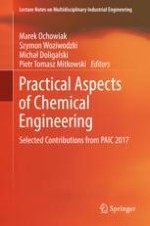2018 | OriginalPaper | Chapter
Cleaning Porous Materials Using Supercritical Fluids
Authors : Jan Krzysztoforski, Marek Henczka
Published in: Practical Aspects of Chemical Engineering
Publisher: Springer International Publishing
Activate our intelligent search to find suitable subject content or patents.
Select sections of text to find matching patents with Artificial Intelligence. powered by
Select sections of text to find additional relevant content using AI-assisted search. powered by
